Do you agree, when you see your favorite games from childhood, warm memories of simple and carefree times, of strong friendship and young parents come into play? Despite the fact that children spent a lot of time outdoors, in Soviet times there were a lot of games that could be played in a group.
In some periods of the USSR, board games had different purposes - from educational and educational to developing mental abilities and thinking. Among the available "board games" there were various types of bingo, walking games with playing fields, but there were also expensive and rare copies that had to be "got". Children of the 70's - 90's should remember this term, which meant that you had to connect acquaintances to acquire certain types of goods. This also applied to toys, which were produced in small numbers.
In this article we will talk about different types of board games of the USSR, which were played by the whole company, and many of them are still reprinted today.
Wandering games with a cube
This type of game was and still is one of the simplest, yet exciting games of the Soviet era. Games in which you had to make moves with chips after a die roll were usually produced in cardboard boxes. Some children's magazines also published board games, and children waited for these issues with great anticipation. In this way, the magazine gained even more value - you could read and play.
The Golden Key or The Adventures of Pinocchio
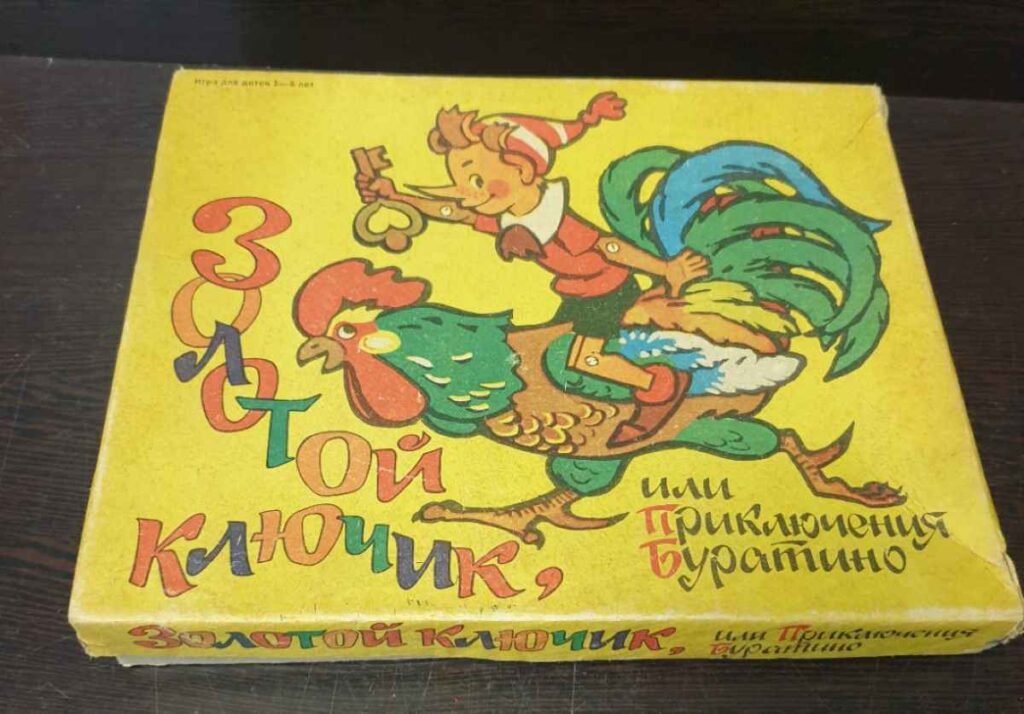
This board game was produced in the USSR in the 70s-80s. It had a playing field with moves and plastic figures of fairy tale characters. The main characters had to walk across the field and escape from Karabas Barabas, Alice the fox and Basilio the cat.
From morning till night
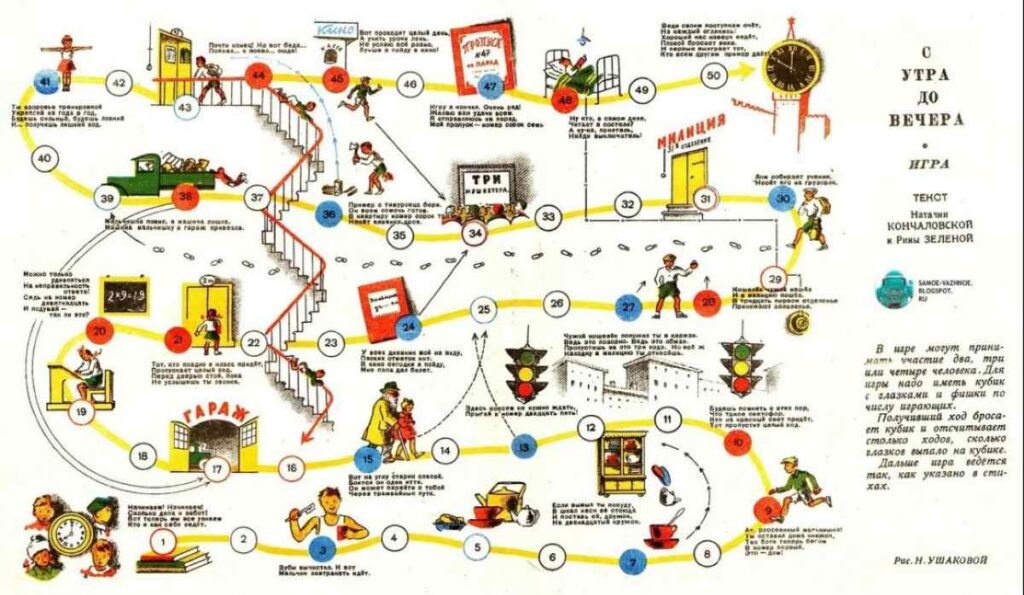

A popular Soviet game in the 50s-60s. Walking across the playing field, you had to perform various chores during the day. Children of those years still remember the short poems with educational meaning that were printed opposite the moves.
Around the world trip


A board game from the series that were published in the magazine "Veselye Kartinki". In addition to "Round the World Journey", in different years the games "Big Space Journey", "On the Road, Friends!" and others were published.
Various bingo games
Lotto is considered a gambling game, but in the USSR it was very popular and was played by adults and children alike. It was a favorite pastime in company, as you can take up to 6 people to play. In addition to the classic game with digital barrels, there were many educational children's bingo with pictures on cards. Such games were produced on different topics and helped children to memorize animals, everyday objects and even learn foreign words.
Classic Soviet bingo with numbers
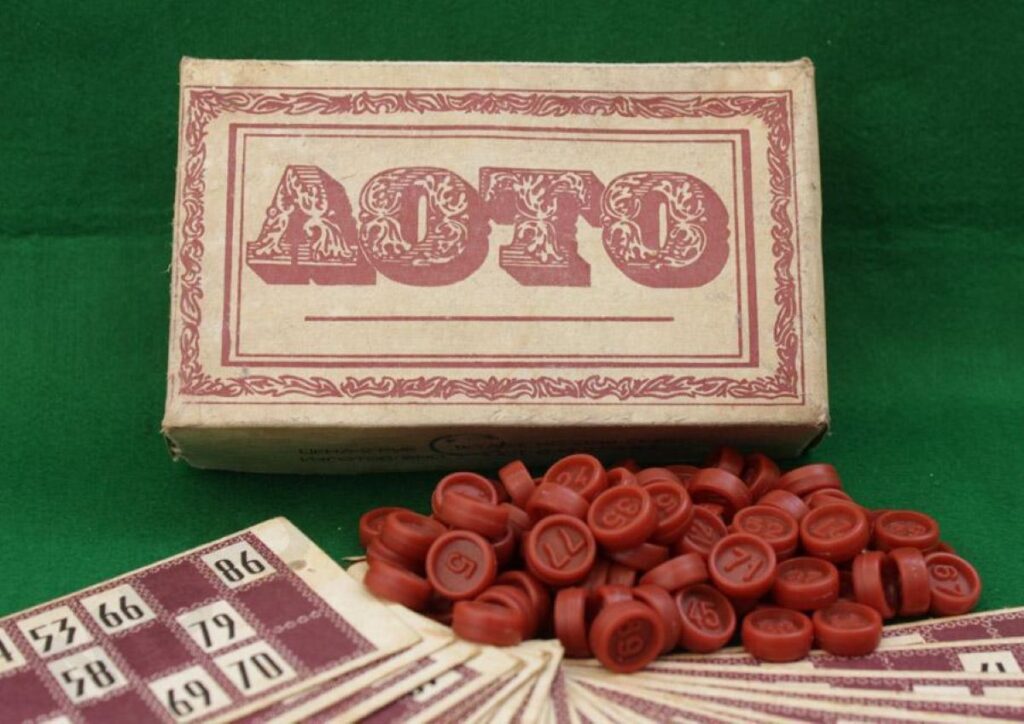

Cards with fields, wooden or plastic barrels with numbers and a canvas sack - a set of classic bingo played by the whole Soviet family. The game is still found on message boards - for those who want to bring back the feeling of cozy childhood.
Bingo for kids


One of the first thinking games, recommended for children from 2 to 4 years old. In the box - cards with the image of three objects, and separate cards, with which you had to close your cards faster than the opponent. This type of bingo is still very popular among parents of kids, as it teaches the child visual memory and reaction.
Bingo in 4 languages
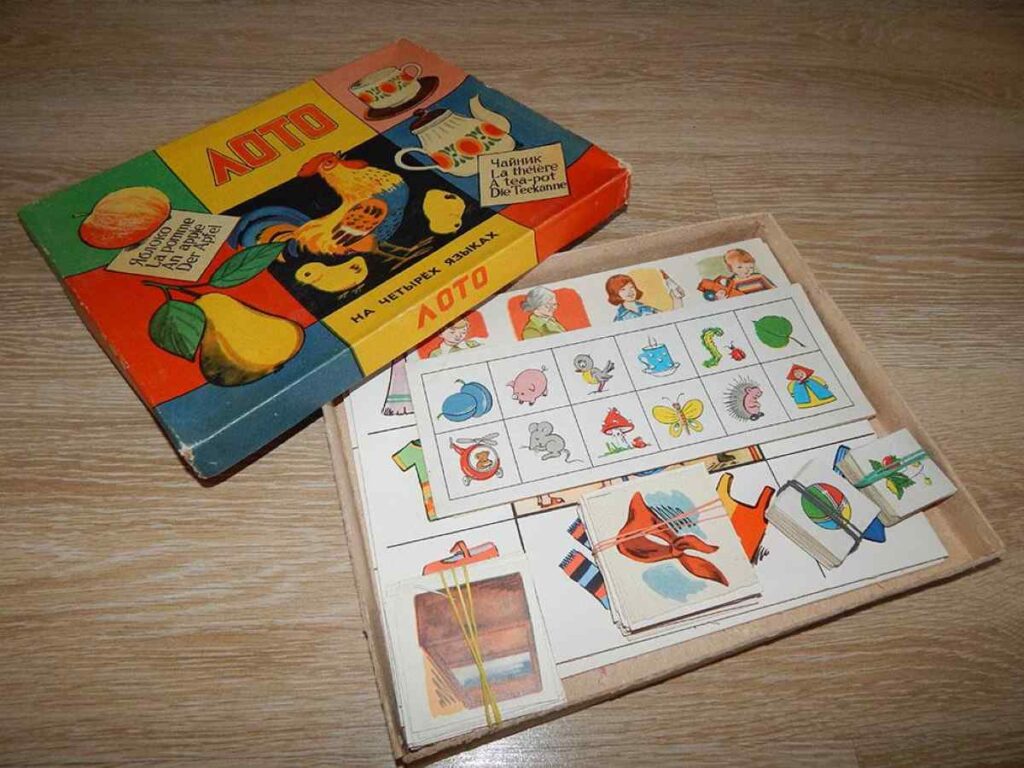

Unusual for the Soviet era children's lotto game, the first version was released in 1986. With its help you could learn foreign words in three languages - English, French and German. The game could be played by nine people, quite suitable for a lesson at school. Moreover, the rules stated that the leader had to know a foreign language (though it is not specified whether it was all three or at least one).
Magnetic and electric quizzes
The predecessors of electronic games, quizzes, appeared in the USSR already in the middle of the 20th century. These games were more complicated because they were developed by Soviet engineers. To play an electric quiz, you needed batteries. The essence of the quiz is to answer the question correctly and press the light bulb with a special stylus. If the answer is correct, the card lit up a certain color, for example, green. If not - either red or did not respond. Magnetic cards were simpler, as they didn't require batteries. But the essence is the same - to answer the questions correctly.
Forest quiz


A useful game for memorizing representatives of the animal world. With the help of such a quiz children could better orient themselves in the surrounding world. One disadvantage was the simple assembly of the electrical circuit. It was enough to turn over the cardboard, to which the wires were attached from below, and memorize in advance where the "right" ones lead.
Magnetic Quiz
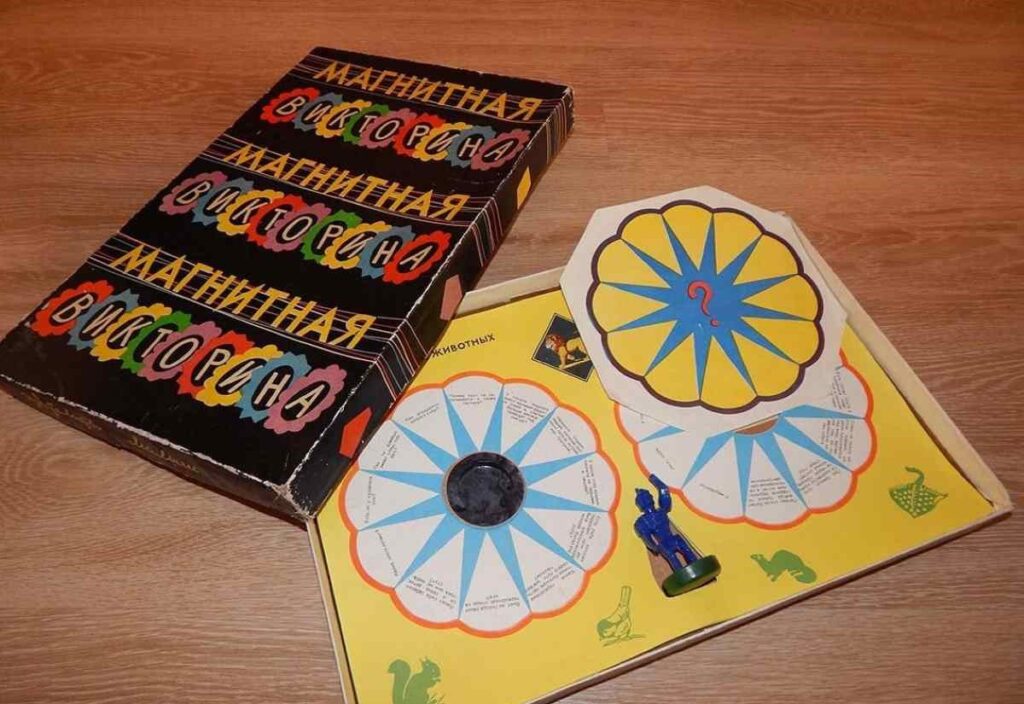

The game was produced from the 1960s. The box contained cards with questions from a variety of fields - about animals, space, questions from children's books, math, physics, and so on. The questions were "answered" by a magnetic knight.
Check your answer
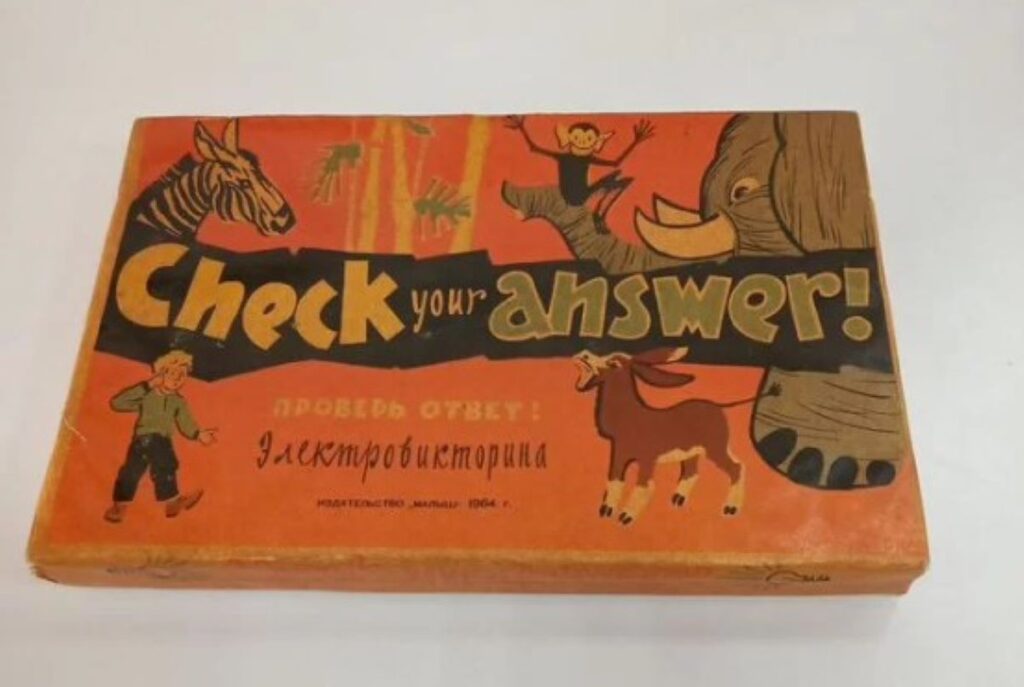

There were also language quizzes among the e-quizzes. In this game it was necessary to read the sentence on the card in English and choose the correct answer. That is, pupils had to understand the text in a foreign language. A good game for practicing! After all, there were no mobile apps back then.
Sports games
Speaking of Soviet sports board games, hockey and soccer immediately come to mind. But there were also games for other sports - basketball, slalom, water skiing, rally. But we took the most famous games, which could be played by the company. Besides, they were especially loved by Soviet boys.
Hockey
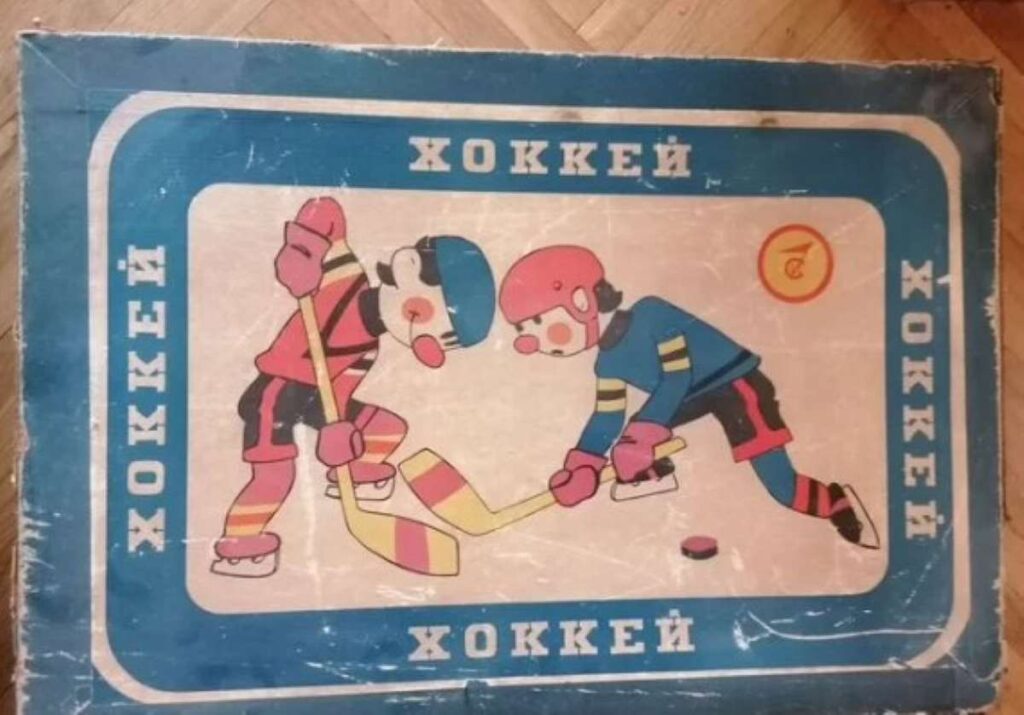

Since hockey was at the height of popularity in the USSR, all boys loved to play this game. Figurines could be moved with levers, kicking shots and scoring the puck into the goal. The game has been re-released many times and is still being released today.
Soccer


There were several varieties of soccer, too, and it was reprinted in different Soviet years. In some versions the players could be controlled with levers, in others they moved with magnets from the bottom of the playing field. The game could be played by the whole yard - two people play, the rest cheer. Just like at the stadium!
Basketball
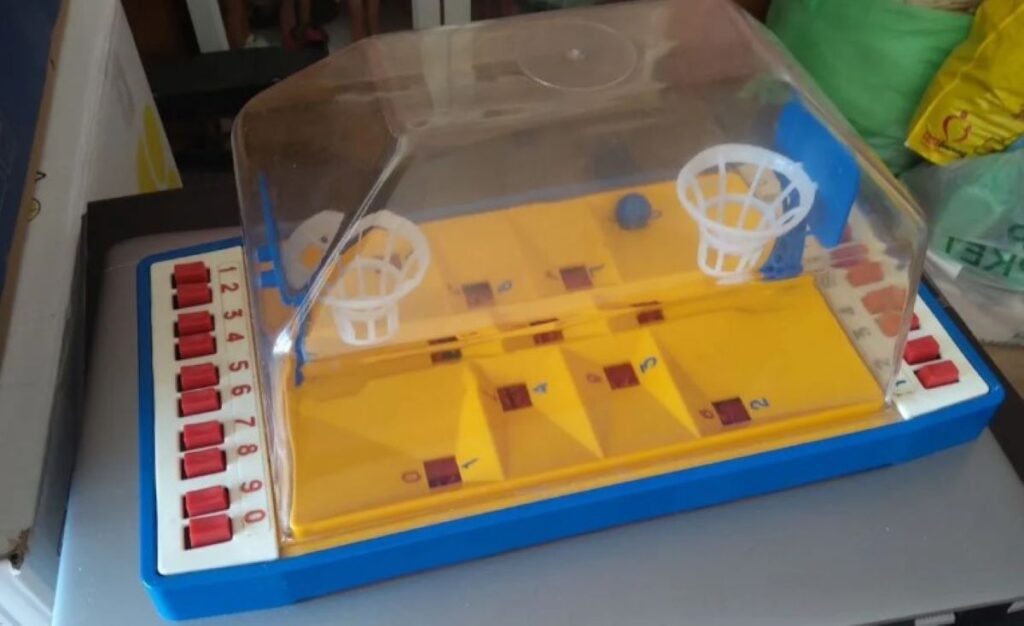

Table basketball was a less common game, but it too had its fans. There were no pieces in this game, and the ball was scored using levers that pushed it out of the hole. It was a two-person game - whoever scored the most goals won.
Economic games
Games with money appeared in the USSR in the late 80's, to be more precise, since 1988, when "Manager" (a variant of American "Monopoly") was invented. These board games quickly spread throughout the country, they were played by all schoolchildren, starting from 8-9 years old and ending with graduates. They were taken with them to summer camp, to dachas and to grandmother's village. When it was still possible to become a millionaire, albeit not a real one. Let us tell you about the three most famous economic games of that time.
Manager
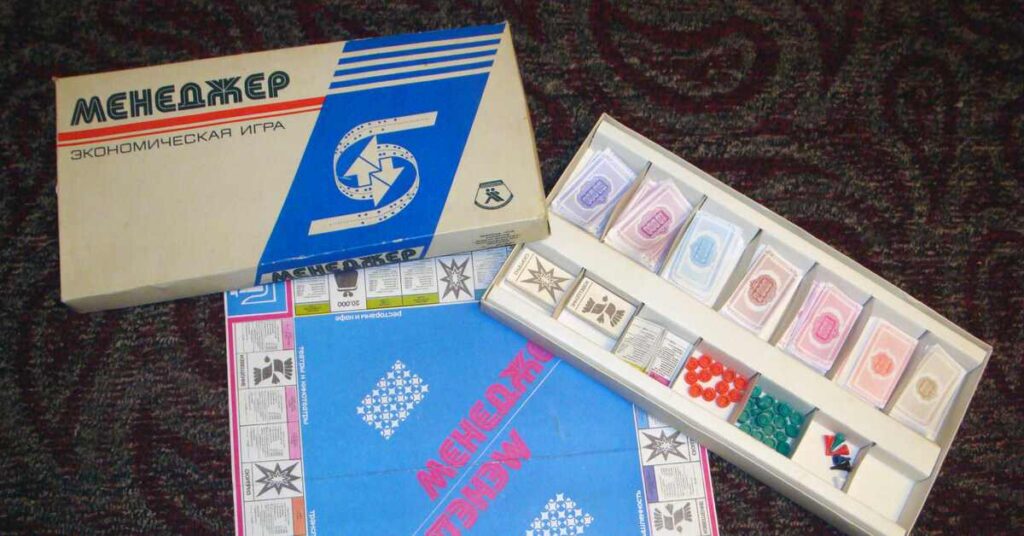

The game was created in 1988, it was often also called "Monopoly". The game had a field with cards of various events, which could be bought with money from the bank. The most interesting thing was that you could become the owner of a real factory, stadiums and other cultural places.
There were many similar games and all of them had economic names - NEP, Cooperative, Commerce, Exchange, Empire.
Commercial


Another interesting variant of the financial game in the spirit of the late Soviet period and early 90s - with racketeering, crazy profits, buying private property and high risk of losing all assets. The game was produced in different versions - with a round and rectangular board.
All of the above board games of the USSR in one form or another survived several decades, and still play them with pleasure already modern children and teenagers. If you are interested in the memories of the Soviet period, you can take a look at this article. In it we have collected familiar to everyone phrases from Soviet cartoons.
Classes at our school are for children of Russian-speaking parents living abroad who want their children to understand Russian culture and speak Russian competently. You can try the lessons for free, leave an application in the form below:







